Just the sight of covered bridges suggests thoughts of old charm and romance. In Lehigh Valley, seven of the slightly more than 200 covered bridges in Pennsylvania are still standing and welcome visitors. Five of these, which are open for traffic, often are taken for granted when crossed by busy travelers every day. The Lehigh Valley Covered Bridge Tour offers an opportunity to journey back in time to a quieter, more idyllic way of life.
The Lehigh Valley Covered Bridge Tour is approximately 50 miles long. Plan to spend several hours for a leisurely drive, which includes time to snap photos and enjoy the scenic beauty surrounding the bridges. There are plenty of spots to stop for a picnic or hike, or just relax and listen to the running water. The route is marked with red signs on the side of the road.
Download the tour brochure here or request a copy be mailed to you. It has helpful turn-by-turn driving directions, as well as detailed information on each bridge including how each got its name (mostly from early settlers in the area).
Here’s What You’ll Find On The Tour
1. Bogert’s Bridge in Allentown: The tour starts at this pedestrian-only span, built in 1841. The bridge, owned by the City of Allentown, is in the Lehigh Parkway and is thought to be one of the oldest in the state. It’s a true gem and arguably one of the most recognizable covered bridges in the area. It is also at a key spot in Lehigh Parkway, one of the best places to run or take a long walk in the area. If you like to fish, the bridge spans the Little Lehigh Creek, a popular fishing stream.
2. Manasses Guth Bridge in South Whitehall: Once you leave Lehigh Parkway, your next stop, after about a 5-mile drive north on Cedar Crest Boulevard, is Manasses Guth Bridge, a 108-foot span that dates back to 1858. It’s the first of five on the tour that spans Jordan Creek.
3. Wehr’s Covered Bridge in South Whitehall: This 128-foot, two-lane bridge, at the western end of Covered Bridge Park, was built in 1841. The beautiful park has plenty of picnic spots, a walking path and recreation center.
4. Rex’s Covered Bridge in North Whitehall: This 116-foot span was built in 1858. Despite its diminutive size, it’s a well-traveled, busy span that is close to two other covered bridges. It’s also the first of three historic covered bridges in North Whitehall.
5. Geiger’s Covered Bridge in North Whitehall: This span, dating to 1860, crosses the Jordan Creek on Old Packhouse Road. It’s on the eastern side of the Trexler-Lehigh County Game Preserve, near the Lehigh Valley Zoo. The bridge has a unique “stepped portal” design, a look that kind of reminds of an old-fashioned country store. It’s a look that is very distinct and sets it apart from the Valley’s other covered bridges. It’s also close to the Covered Bridge Trail, for anyone looking for an easy 1.2 mile hike.
6. Schlicher’s Covered Bridge in North Whitehall: A century of use took its toll on this state-owned bridge, so PennDOT had to close the sagging structure in 2010. Visitors to the Lehigh Valley Zoo had to endure years of detours and GPS re-routings while work continued. It was too costly to repair the bridge so it had to be replaced. However, 10 percent of the new structure had recycled materials from the original, which allows the structure to keep its National Register of Historic Places designation. It’s still an amazing structure in arguably one of the prettiest parts of the Valley. It’s also deep in the woods so it’s the perfect spot for anyone looking to enjoy fall foliage.
7. Kreidersville Covered Bridge in Allen Township: After a 14-mile drive, the tour wraps up at its only Northampton County bridge. The pedestrian-only span was built in 1839, making it the oldest covered bridge in the Lehigh Valley and one of the oldest in the state. It’s also the only remaining covered bridge in Northampton County. The 116-foot single-span bridge has had other names, including Hummel’s Bridge and Solt’s Bridge and spans the Hokendauqua Creek. It’s immaculately preserved and maintained. It’s an ideal spot to enjoy the scenery or as a backdrop for family photos. There’s also a great bench where you can sit and listen to the geese flying overhead.
Covered Bridge Facts
• Why are they covered? Wooden bridges with exposed superstructures are vulnerable to weather and rot. Covering the bridge with a roof also strengthened the entire structure.
• Why do they resemble barns? The spans were built to resemble barns so farm animals would feel more at home and not stampede as they were driven across the streams and rivers.
• Why are they sometimes called “kissing bridges”? They provided shelter from a storm and a chance to sneak a kiss.
• Did you know? Pennsylvania has the most remaining covered bridges in the nation. Pennsylvania also had the first covered bridge, built in 1805 by Timothy Palmer, a carpenter from Massachusetts, that spanned the Schuylkill River in Philadelphia.





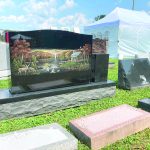


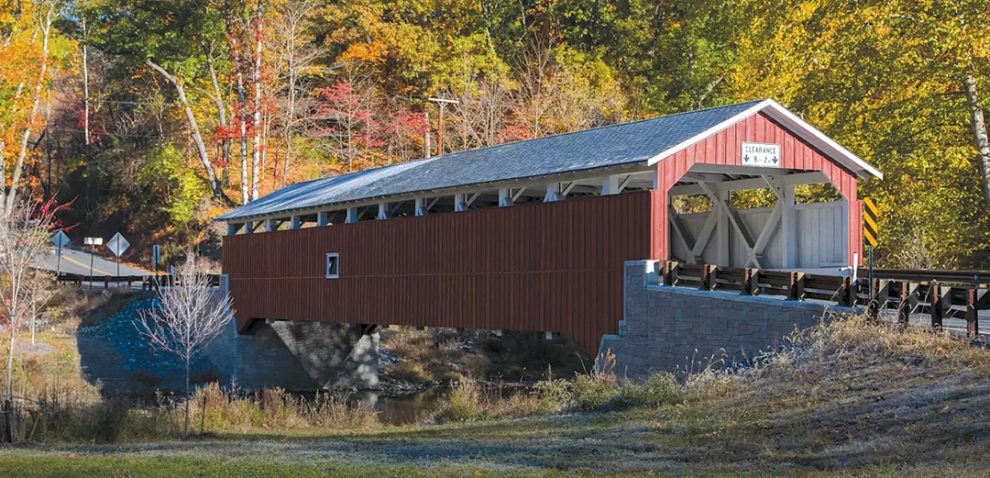


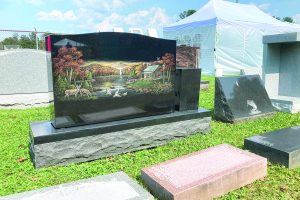

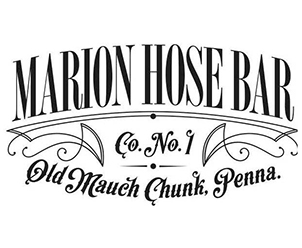

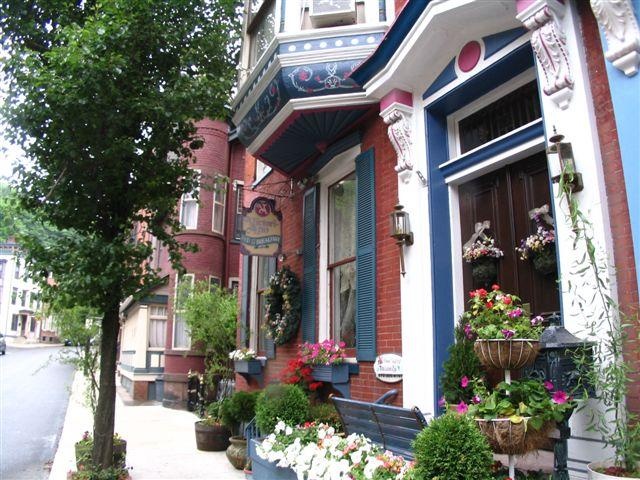


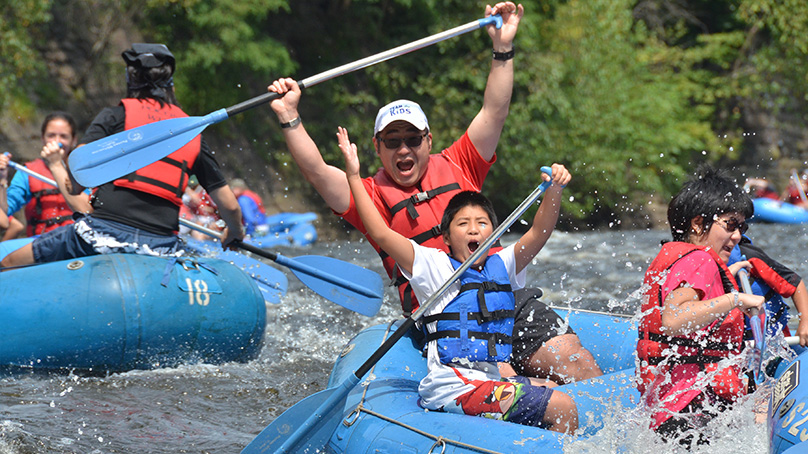








Add Comment